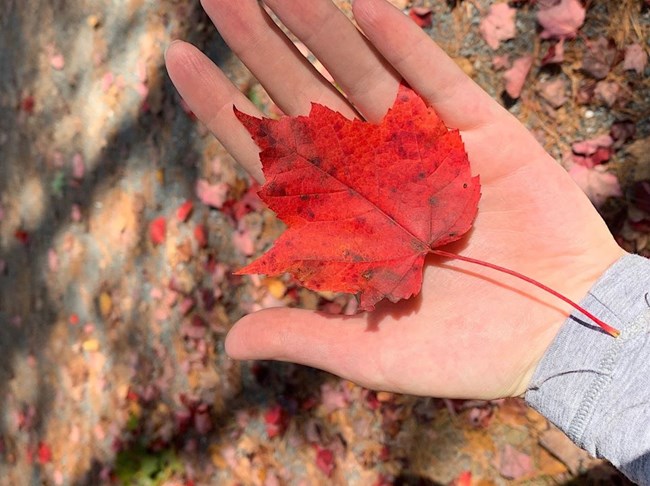Last updated: April 22, 2021
Article
Why Do Leaves Change Colors in the Fall
Ever since the leaves on the trees bloomed in the spring, they have actively been helping the tree grow. Each leaf contains a pigment called chlorophyll. Chlorophyll is the most common pigment in a leaf. It absorbs the sun’s rays to turn sunlight into food and energy for the tree. Chlorophyll is also what gives a plant its green color.

NPS Photo/Hadley Seymour

NPS Photo/Hadley Seymour
Index:
- Enzyme: a substance in plants and animals that can perform specific tasks to keep plants and animals functioning
- Pigment: the natural color of plant or animal tissue
Citations:
- Britannica Kids, Encyclopædia Britannica, Inc., kids.britannica.com/students/article/enzyme/274186.
- “Chlorophyllase.” ScienceDirect Topics, ScienceDirect, www.sciencedirect.com/topics/agricultural-and-biological-sciences/chlorophyllase.
- Palm, Carl E. “Why Leaves Change Color.” Around Your World, SUNY College of Environmental Science and Forestry, www.esf.edu/pubprog/brochure/leaves/leaves.htm.
